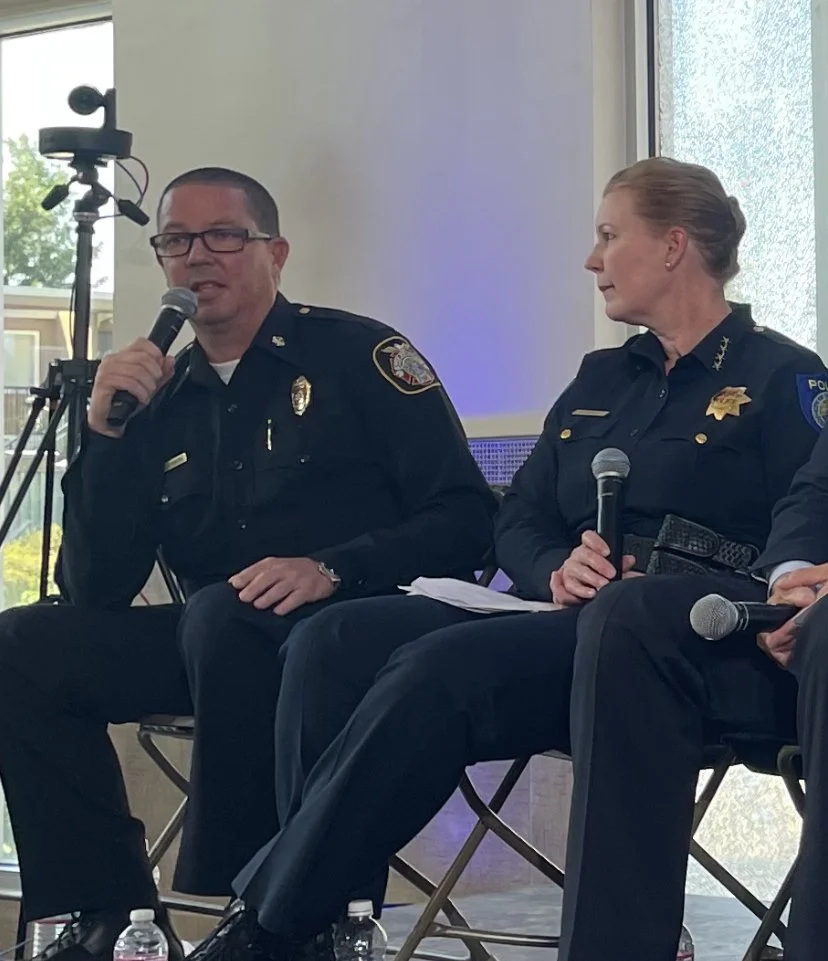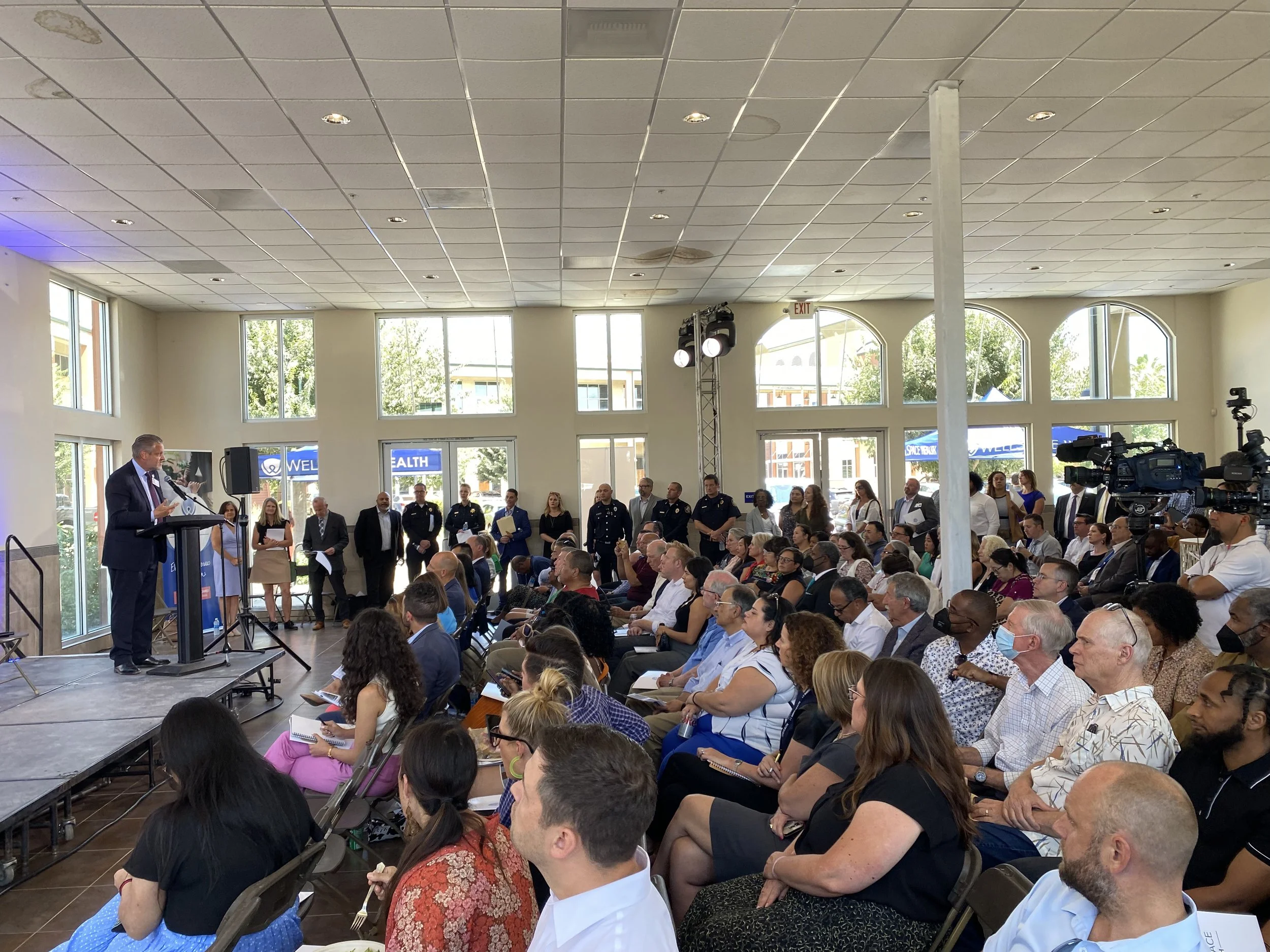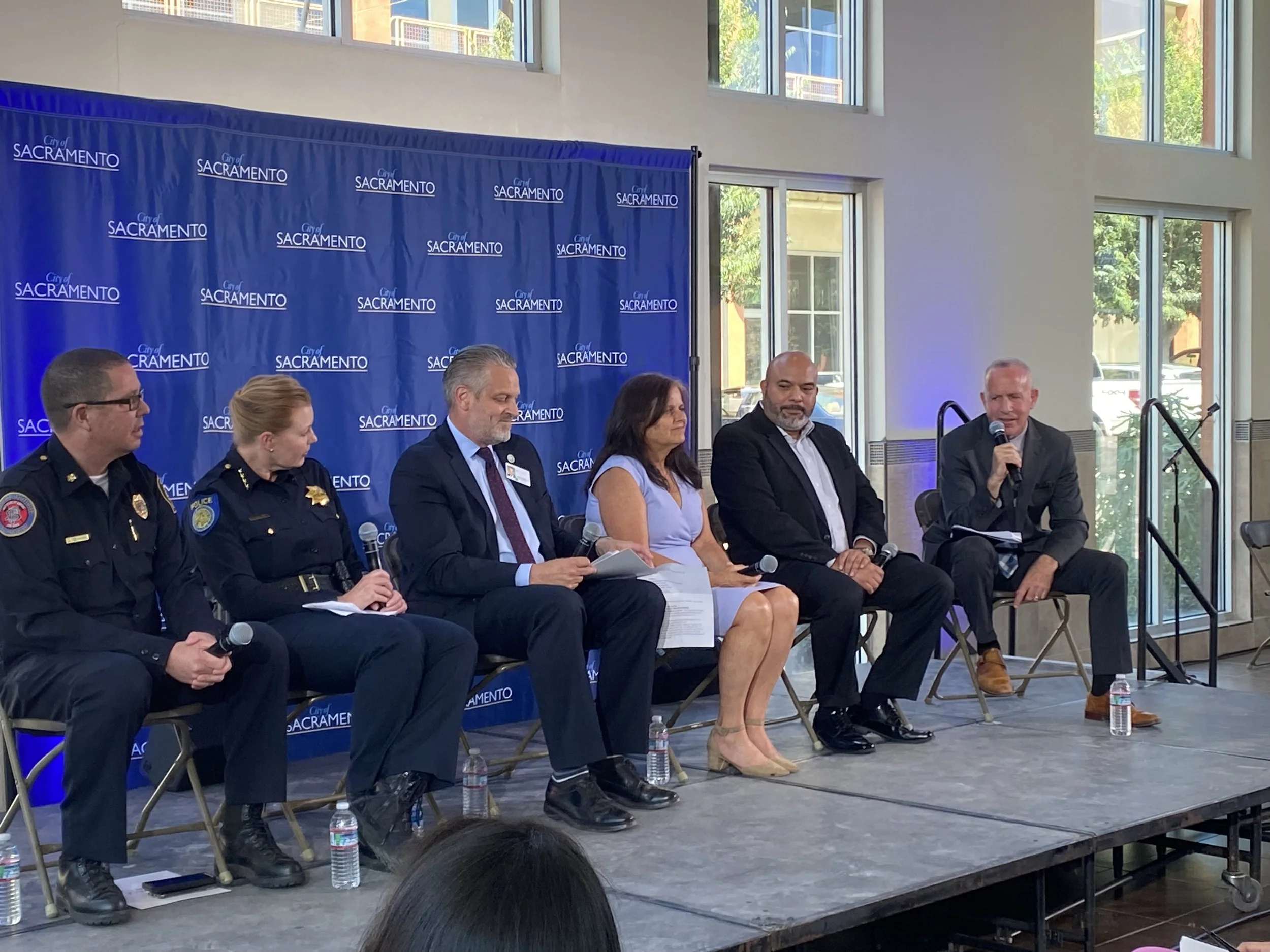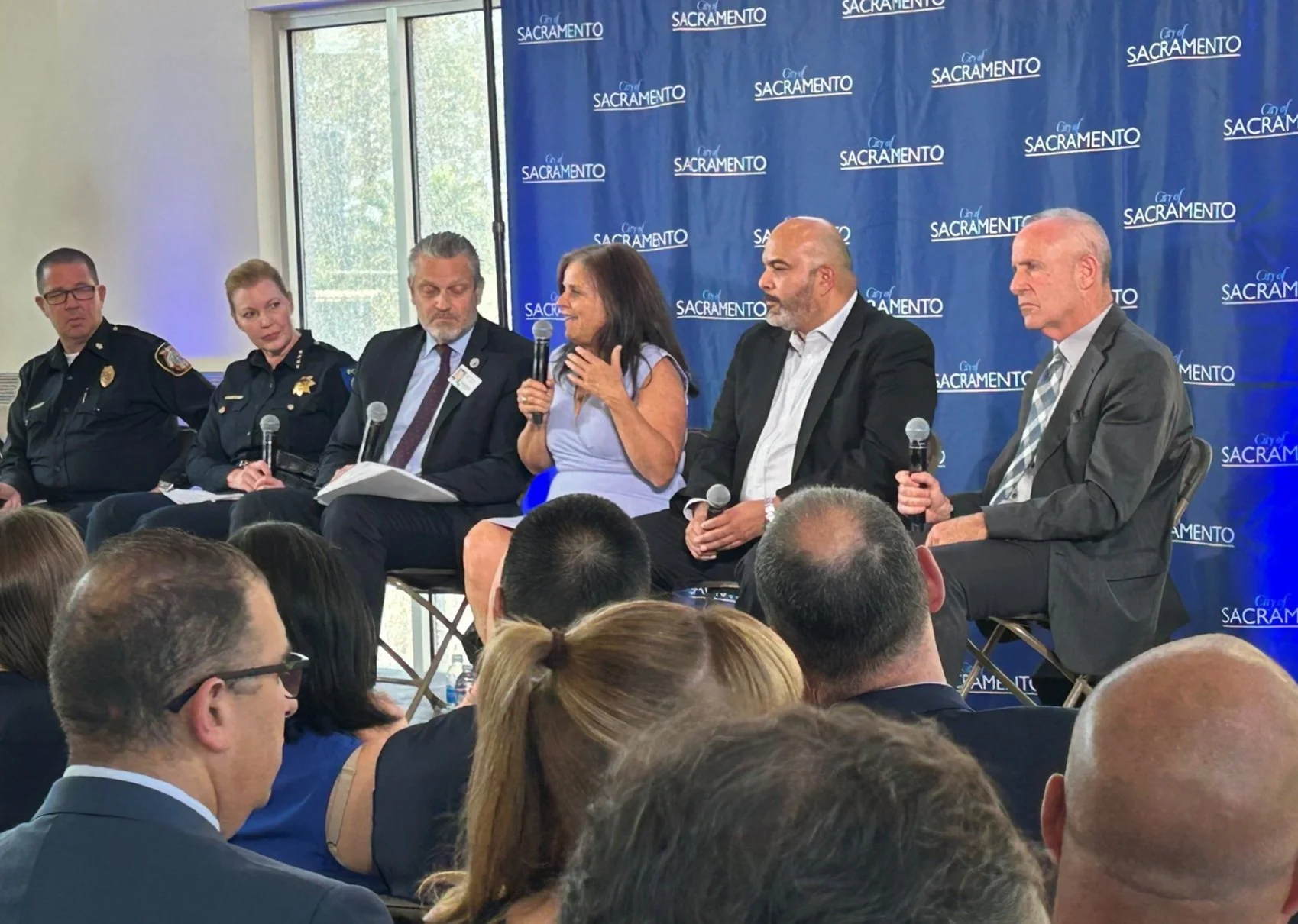State of the City 2023 Part 2 - All Hands on Deck - A coordinated response to homelessness
Sacramento, CA (Aug. 23, 2023) - State of the City 2023 Part 2 took place in WellSpace Health’s newly acquired health and wellness facility on Stockton Boulevard. Read the full transcript of Mayor Steinberg’s introduction and watch the livestream of the full presentation.
Mayor Steinberg’s Remarks for State of the City Part 2
Thank you, Jonathan. What you’re building here is going to be a vital piece of our coordinated response to homelessness. It’s an example of how we can and must work together to build a system that will produce real relief for suffering people and our broader community. I’ll talk more about that in a moment.
I also want to thank Vice Mayor Eric Guerra, who couldn’t be here today because he is having his confirmation hearing for the California Air Resources Board. Eric has been a great champion on this Wellspace project and so many others that are important to our city.
Working together to solve our biggest challenge is the focus for this State of the City part II. Not so much fun as Monday night, when I laid out how we can change the city’s permitting process to make it easier to host live music. We listened to a great band and celebrated Sacramento’s potential as a live music capital. I even managed to get more laughs than groans with my jokes.
Today it’s back to the hard stuff. I appreciate you all making the time to join me as we talk about a topic that too often divides us, but really should always unite us in determination to work together now more than ever. It’s the only way that we can succeed.
Before I talk about what’s been missing from our homelessness, healthcare and public safety response, I want to look back at just SOME of what the City of Sacramento, which has never historically been a homeless service agency, has done. And we have done a lot over the past six plus years.
We’ve opened 1,100 temporary beds, created and staffed the new Department of Community Response and passed ordinances we can use to keep sidewalks clear and protect the areas around schools and critical facilities from the spillover effects of homeless encampments. We have cleared 4500 sidewalk complaints alone. Since 2017, our joint city county efforts have helped more than 17,000 people off the streets.
One of our biggest potential achievements is a legally binding partnership agreement with the County of Sacramento that for the first time has county behavioral health workers doing outreach with our city teams each day to get desperately ill people into treatment. It’s a work in progress. We still need to get far more sick people into treatment, voluntarily or not.
I am fully behind Governor Newsom’s initiative to modernize the law I wrote in 2004, the Mental Health Services Act. Counties must spend more of the billions generated every year directly for people living in these terrible circumstances.
Since the siting of homeless facilities is such a challenge – the great irony, fix this but don’t put it in my neighborhood -- I pushed a controversial measure delegating to the city manager the unilateral authority to choose safe camping sites. He will begin delivering those sites soon. We also strengthened the enforcement of our sidewalk, personal storage, and critical infrastructure ordinances.
But despite all these foundations and advances, there is still a missing piece. What is it? We actually answered that question even if we didn’t realize it at the time, last January during the devastating storms that hit Sacramento on New Year’s Eve.
The record rain and wind knocked down hundreds of trees and threatened to shut down the pumps that we depend on to keep our city dry.
Our entire City Council visited the Joint Incident Command Center in the south area Corporation yard and were awed by what we witnessed. People from all different departments sitting in the same room sharing information in real time. The arborists dispatched crews to remove fallen trees. The Utilities department cleared clogged drains and made sure the pumps were working. The police and fire departments supported all the work necessary to keep neighborhoods safe and expedite the cleanup. All the while, the finance people kept track of all the expenses so the city could obtain reimbursement from the Federal government.
It was all hands on deck. A true emergency response.
It's the way the city, state and country always respond to natural disasters. It’s become reflexive. Fires, floods, hurricanes, earthquakes.
Two years ago, I proposed a Department of Community Response. It’s made up of incredibly dedicated men and women who respond to people living in encampments and vans and cars and work to help as many people as possible into shelter and safe ground. It’s one department, and it’s overwhelmed.
At the same time, the Fire, Police and Code Enforcement departments are all receiving similar calls. The 311 system is overloaded, and calls come in so quickly it takes 4.3 days on average to respond. That’s a huge improvement over 33 days a year ago but still too long for people needing help and for neighbors demanding, when will this encampment be cleaned up?
Our goal MUST BE real time response.
If a true joint emergency response is expected for a natural disaster, we must do no less for this man-made disaster we call homelessness.
I proposed the idea of a homeless emergency response center two years ago. The time for this approach is long overdue.
On the same night that we approved giving the city manager the authority to set up safe grounds to help people, we also directed him to seek strict compliance with city ordinances much more rapidly, using overtime if necessary. This new rapid response to both help people off the streets and make our streets cleaner and safer can only succeed if we commit to the same kind of coordinated emergency response that is standard for every other kind of emergency.
As a result of the seed I planted and the clear Council direction, this emergency response model for the city is already being built. DCR will still be at the center of our effort, but here is today’s big news: the City’s new emergency response to homelessness will be led and directed by our Fire Department. Why? Fire is already most often the first responder to crises and health related emergencies. They are used to joining with other agencies in large-scale firefighting efforts that have included some of the biggest and most deadly disasters in state history. They have the skill, the expertise and the community support to lead this effort.
Fire will now coordinate the activities of DCR, the Police Department, Code Enforcement, County behavioral health workers, the park rangers and our outside service partners like Hope Cooperative.
Brian Pedro has been tapped to run it, and he’s currently working to perfect the structure. He’s a registered nurse who has been emergency services director of the fire departments here and in Reno. He’s also a Lieutenant Colonel in the Air Force reserves and is a great choice for this role.
Homelessness is not a one-time natural disaster. It’s ongoing, so our joint emergency response will in some ways look different than the storm response.
But the elements of our emergency response on homelessness must be the same as for every other disaster-coordination, rapid deployment and response, the immediate, rapid sharing of information and a daily accountability to the public to help more people and for the people of our city to see a difference.
Currently, a group of city and county officials meet once a week in the space on Richards Boulevard. They identify the most severe encampments and prioritize where to send DCR and county behavioral health workers.
This new emergency operations center will be more structured and comprehensive. Once it is fully up and running, lead officials in each of these departments will gather as often as necessary to identify the hottest spots and deploy more rapid response to the individual and community calls for relief. This new emergency response must bring better results.
I’m confident it will, but I have to say I’ve long since abandoned the idea that the city can dent this problem alone. This is not a Sacramento problem. It’s a state and national problem. We can debate the causes – and truly there are many – but at the core of everything it’s really systemic poverty. People have always lived with serious mental health issues, and substance abuse is not new. But now, people who were able to barely hang on no longer can. Housing is too unaffordable. Society is much more coarse. More people are isolated and have safety nets that have come unraveled.
We do everything we can. But solving homelessness is far beyond the scope and capability of a single municipal government.
That is why our partnership with the county is so important. In the end, no amount of coordination or encampment outreach or even necessary enforcement will change our reality until we provide many more pathways into safe camping, shelter, tiny homes and even more importantly, mental health and drug treatment.
In addition to our 1,100 nightly beds, the city currently holds a handful of spots in our Miller Park safe campground for immediate placement of people sleeping outdoors who agree to come into a safer, organized setting away from businesses, homes and public spaces. We need way more. That’s why the decision to task the city manager with creating new safe camping sites is so important.
Most of our shelter assets are in the so-called coordinated access system with the county, and that’s a system that we should applaud and build up. But it takes days to get a bed through coordinated access. We can’t credibly offer people somewhere to go immediately without more emergency spots -- and with the manager choosing the sites free of politics, and a real time emerging response to moving people from where they shouldn’t be to where they actually can get help, we will get there.
I voted for strict compliance/enforcement of our ordinances. The public has a right to use its sidewalks. But we will be selling the public a bill of goods if that’s the end of the response. Enforce, but enforce to where? Take people to Safe ground or a shelter, but then what? Get people housed, but what happens if they’re too ill to stay housed? In the end, no matter how many people we move, or we shelter, or we house, if there’s no path to get thousands help for underlying mental health or substance abuse conditions -- none of it will succeed.
Our criminal justice system must also be a full partner. The major study of California’s homeless population recently completed by UC San Francisco found that 19 percent of the thousands of people surveyed entered homelessness directly from jail or prison. And I think that’s an undercount. The vast majority said they received no support to prepare for a successful release. No help finding housing. No treatment to prevent them from using drugs again. Not even a ride back to the place they had called home.
I will support any path that results in people getting the help they need. Voluntary services first, but involuntary services if necessary, including using court diversion. But the services, the full service partnerships, the wrap arounds, voluntary or involuntary, most be increased dramatically. One person enrolled in a full-service partnership from our recent cleanup of 28th and C?
C’mon, that is not enough.
We have a long way to go to improve those results and help the thousands of people we need to help, but I don’t want to minimize the progress we’ve made. It’s a huge breakthrough that the city and county actually ARE working shoulder to shoulder in this fight. In early September, the county will open its new CORE mental health care center at 14th and X. It will be a key drop in and referral point to bring people into treatment. We insisted on a downtown mental health center in our partnership agreement and the county is making it happen. It will be run by Hope Cooperative.
There are also hopeful signs right here on the property where we stand. Wellspace bought it for a comprehensive care campus – the kind of thing people have been calling for. It will have a state-of-the-art 988 call center. An expanded version of the CRIB, the sobering center near downtown that the city and county helped stand up. 200 substance abuse beds. Step down beds to get people prepared to reenter society successfully when they’re done with treatment. Affordable housing for seniors. A dental clinic to fix teeth ravaged by drug abuse so people can start new lives. Let’s make sure these services are put to work sooner rather than later to help the people who are living on the streets.
Let’s go after grant or philanthropic funding, or city and county funding, and add WellSpace to our team. They are experts at responding to the hardest calls, and they can transport people in crisis directly to the CRIB, where they can be enrolled directly into substance abuse treatment or connected with health care through the WellSpace system.
Again, thanks for joining me here today to hear how the city will elevate its efforts to treat this as the true emergency people know it to be.
Now we get to hear from our panel of experts who live and breathe this topic every day. How do they envision a new emergency operations response? How could our response evolve going forward? We have Fire Chief Chris Costamagna, Police Chief Kathy Lester, Jonathan Porteus from Wellspace, Erin Johansen from Hope Cooperative, and Mario Lara from our Department of Community Response.









